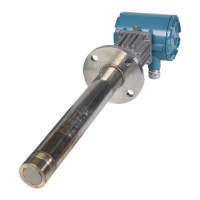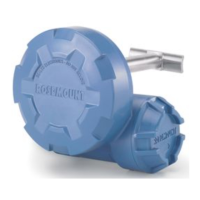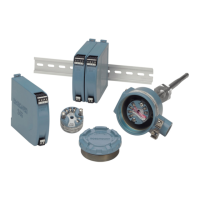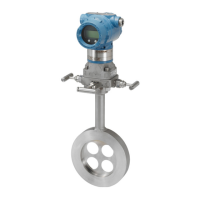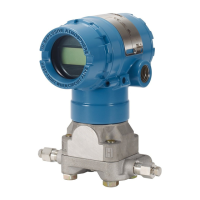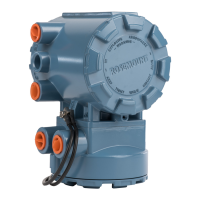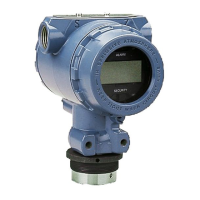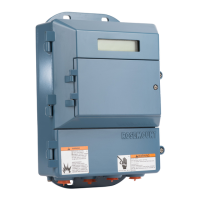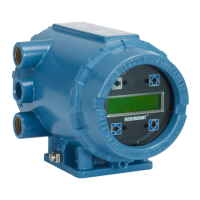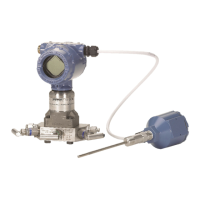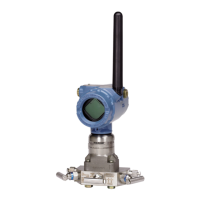Do you have a question about the Rosemount Oxymitter 5000 and is the answer not in the manual?
Provides a general understanding of the Oxymitter 5000, its capabilities, and its role in process analysis.
Details essential safety precautions, system considerations, and procedures for physically installing and handling the device.
Lists the technical specifications, including O2 range, accuracy, temperature limits, materials, and certifications.
Covers selecting the optimal location and performing the physical mounting of the Oxymitter probe and housing.
Explains the wiring procedures for both integral and remote electronics configurations, including power and signal connections.
Details the connection of reference air and calibration gas lines to the system.
Describes how to connect optional calibration systems like IMPS 4000 and SPS 4001B.
Ensures the unit is correctly installed and checks terminal block wiring for proper connections.
Explains how to configure the logic I/O pin for alarm or handshake signals based on different modes.
Confirms proper installation and checks terminal block wiring for the LOI setup.
Details how to configure the device settings using the Local Operator Interface (LOI).
Covers logic I/O setup and recommended configuration settings for optimal performance.
Describes the initial power-up sequence, including cell heating and diagnostic LED behavior.
Explains normal operation indicators, diagnostic LEDs, and keypad functions for calibration.
Covers the initial power-up sequence and the normal display readings on the LOI.
Details how to navigate the LOI menus, key designations, lockout features, and system setup.
Introduces the communicator, its interface capabilities, and connection to the system's terminal block.
Explains off-line/on-line operations, logic I/O configurations, and the fieldbus menu tree.
Provides an overview of troubleshooting, grounding, electrical noise, ICs, ESD, and alarm indications/contacts.
Guides on identifying and correcting specific alarm indications based on LED patterns and messages.
Addresses issues like failure to reach setpoint and incorrect readings after calibration.
Outlines methods for calibration using keypad, FOUNDATION Fieldbus, and LOI.
Details procedures for removing and replacing major components like probes and electronics.
Lists part numbers for various probe components, including flame arrestors and diffusion elements.
Provides part numbers for electronic assemblies, keypads, LOI modules, and housings.
Describes the Model 375 Handheld Communicator and Asset Management Solutions software.
Details the IMPS 4000 and SPS 4001B autocalibration sequencers.
Information on O2 calibration gas bottles and service kits.
General safety instructions for wiring and installation, with specific EU directives.
Provides detailed safety data, including health hazards, physical properties, and handling precautions.
Outlines the process for returning defective equipment for factory repair or replacement.
Lists and describes various parameters used for Fieldbus communication with the Oxymitter.
Explains the AI block's features like simulation, filtering, signal conversion, modes, and alarm detection.
Provides context on AI block configuration for specific applications like temperature and level measurement.
Lists common issues with the AI block and their corrective actions.
Details parameters for setpoint selection, filtering, feedforward, tracking, output limiting, and PID structures.
Covers block errors, operational modes, alarm detection, and status handling for the PID block.
Describes PID block usage in control strategies like closed-loop, feedforward, and cascade control.
Provides guidance on troubleshooting common problems encountered with the PID function block.
Outlines the terms and conditions of the manufacturer's warranty for the equipment.
Provides a general understanding of the Oxymitter 5000, its capabilities, and its role in process analysis.
Details essential safety precautions, system considerations, and procedures for physically installing and handling the device.
Lists the technical specifications, including O2 range, accuracy, temperature limits, materials, and certifications.
Covers selecting the optimal location and performing the physical mounting of the Oxymitter probe and housing.
Explains the wiring procedures for both integral and remote electronics configurations, including power and signal connections.
Details the connection of reference air and calibration gas lines to the system.
Describes how to connect optional calibration systems like IMPS 4000 and SPS 4001B.
Ensures the unit is correctly installed and checks terminal block wiring for proper connections.
Explains how to configure the logic I/O pin for alarm or handshake signals based on different modes.
Confirms proper installation and checks terminal block wiring for the LOI setup.
Details how to configure the device settings using the Local Operator Interface (LOI).
Covers logic I/O setup and recommended configuration settings for optimal performance.
Describes the initial power-up sequence, including cell heating and diagnostic LED behavior.
Explains normal operation indicators, diagnostic LEDs, and keypad functions for calibration.
Covers the initial power-up sequence and the normal display readings on the LOI.
Details how to navigate the LOI menus, key designations, lockout features, and system setup.
Introduces the communicator, its interface capabilities, and connection to the system's terminal block.
Explains off-line/on-line operations, logic I/O configurations, and the fieldbus menu tree.
Provides an overview of troubleshooting, grounding, electrical noise, ICs, ESD, and alarm indications/contacts.
Guides on identifying and correcting specific alarm indications based on LED patterns and messages.
Addresses issues like failure to reach setpoint and incorrect readings after calibration.
Outlines methods for calibration using keypad, FOUNDATION Fieldbus, and LOI.
Details procedures for removing and replacing major components like probes and electronics.
Lists part numbers for various probe components, including flame arrestors and diffusion elements.
Provides part numbers for electronic assemblies, keypads, LOI modules, and housings.
Describes the Model 375 Handheld Communicator and Asset Management Solutions software.
Details the IMPS 4000 and SPS 4001B autocalibration sequencers.
Information on O2 calibration gas bottles and service kits.
General safety instructions for wiring and installation, with specific EU directives.
Provides detailed safety data, including health hazards, physical properties, and handling precautions.
Outlines the process for returning defective equipment for factory repair or replacement.
Lists and describes various parameters used for Fieldbus communication with the Oxymitter.
Explains the AI block's features like simulation, filtering, signal conversion, modes, and alarm detection.
Provides context on AI block configuration for specific applications like temperature and level measurement.
Lists common issues with the AI block and their corrective actions.
Details parameters for setpoint selection, filtering, feedforward, tracking, output limiting, and PID structures.
Covers block errors, operational modes, alarm detection, and status handling for the PID block.
Describes PID block usage in control strategies like closed-loop, feedforward, and cascade control.
Provides guidance on troubleshooting common problems encountered with the PID function block.
Outlines the terms and conditions of the manufacturer's warranty for the equipment.
| Brand | Rosemount |
|---|---|
| Model | Oxymitter 5000 |
| Category | Transmitter |
| Language | English |
